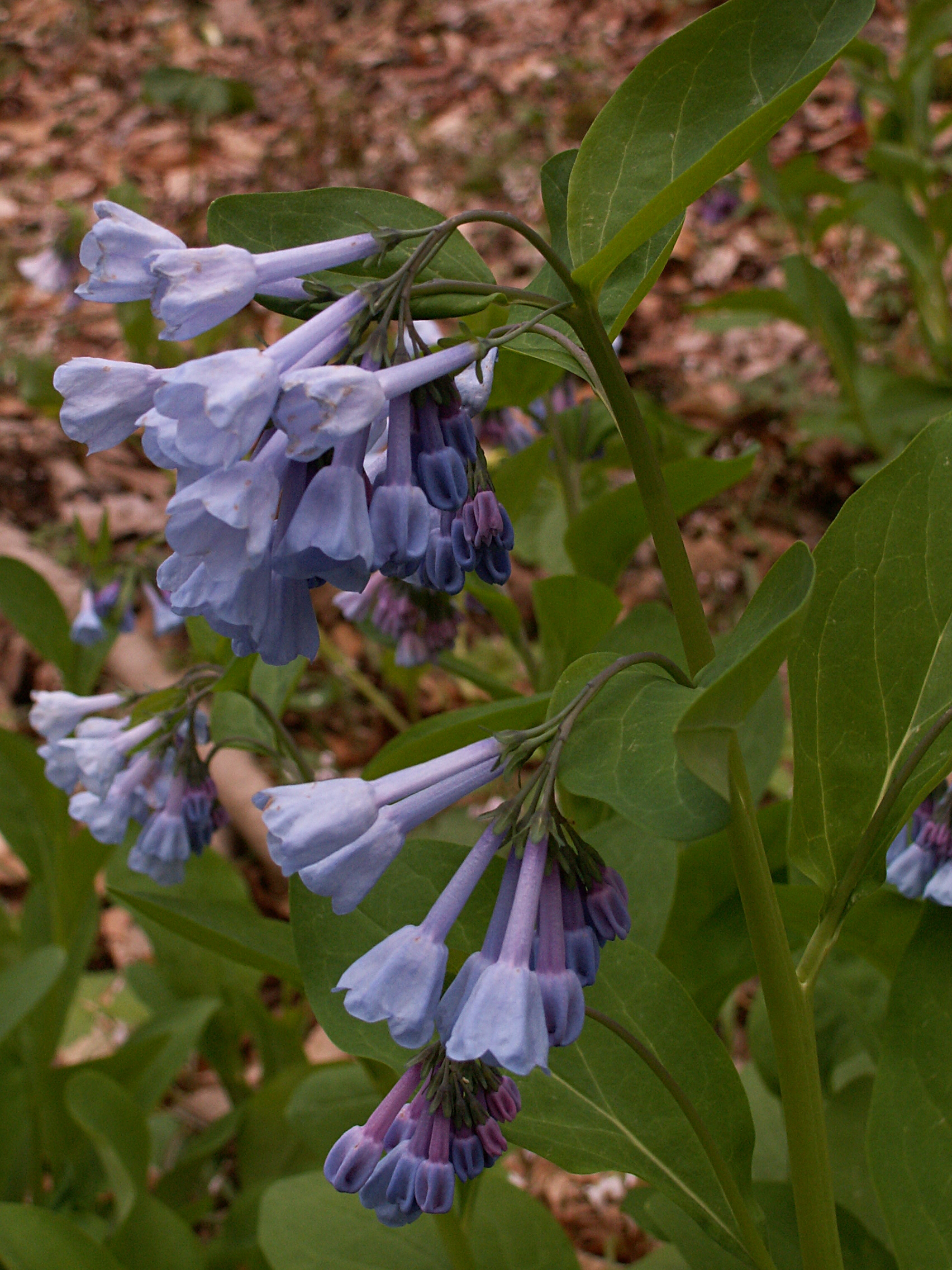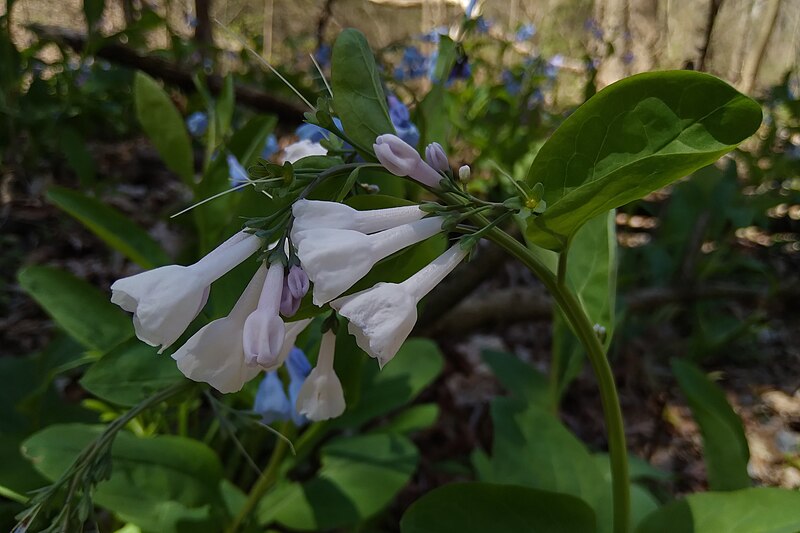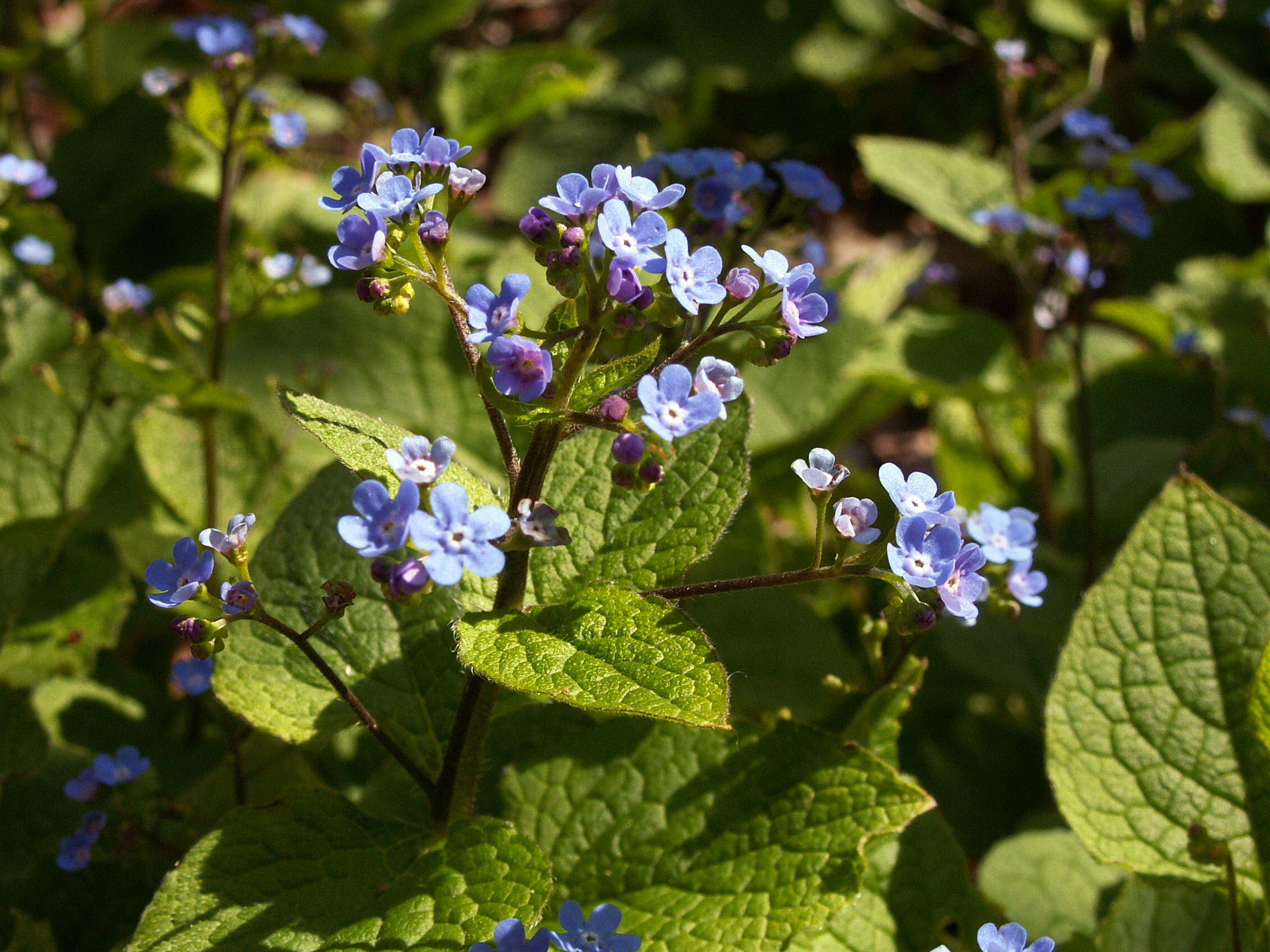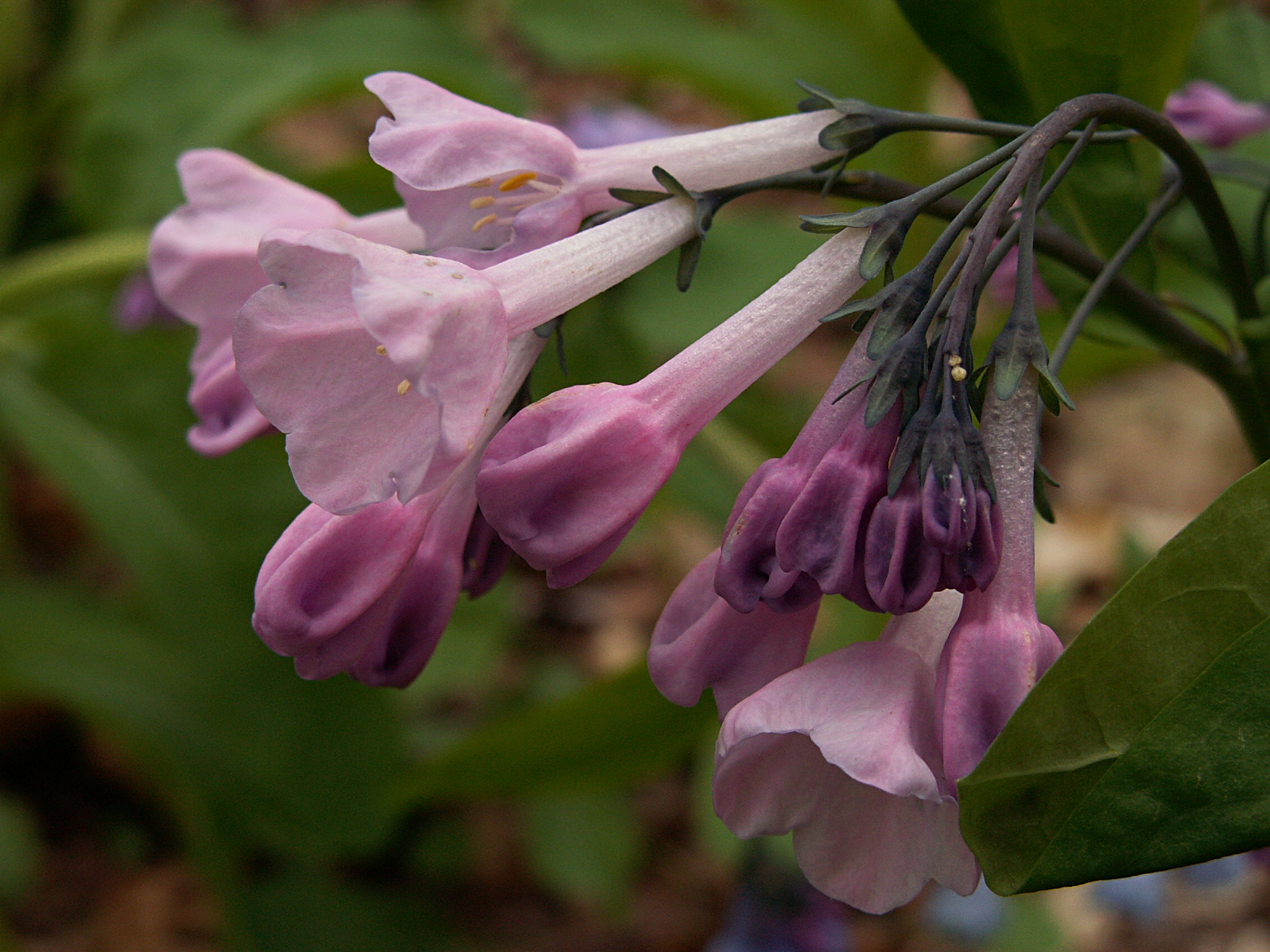Category: Boraginaceae
Siberian Bugloss (Brunnera macrophylla)
This plant is not recorded as growing wild in the Pittsburgh area; but here it is, naturalized in Bird Park, Mount Lebanon, and blooming at the end of April in a corner of the woods where it was almost certainly not planted. Probably some seeds washed down into the park from the suburban yards on the hill above.
Siberian Bugloss looks very much like a species of Forget-Me-Not (Myosotis spp.), but is easily distinguished by its large heart-shaped leaves (thus the specific name macrophylla, which means “large-leaved”). Gray does not describe this species, but this quick description should make identification straightforward.
Virginia Bluebells (Mertensia virginica)—the Complete Color Range
 Virginia Bluebells are, as the name suggests, commonly blue. But in a large patch you may find other colors occasionally as well: pale lavender, pink, pale purple, and pure white. Here we have the complete color range from near the Trillium Trail in Fox Chapel, where they were all blooming in late April.
Virginia Bluebells are, as the name suggests, commonly blue. But in a large patch you may find other colors occasionally as well: pale lavender, pink, pale purple, and pure white. Here we have the complete color range from near the Trillium Trail in Fox Chapel, where they were all blooming in late April.
Gray describes the genus and the species (though he seems not to have run across any pink flowers):
MERTENSIA Roth. LUNGWORT
Corolla longer than the deeply 5-cleft or 5-parted calyx, naked, or with 5 small glandular folds or appendages in the open throat. Anthers oblong or arrow-shaped. Style long and thread-form. Nutlets ovoid, fleshy when fresh, smooth or wrinkled, obliquely attached by a prominent internal angle; the scar small. Smooth or soft-hairy perennial herbs, with pale and entire leaves, and handsome purplish-blue (rarely white) flowers, in loose and short panicled or corymbed raceme-like clusters, only the lower one leafy-bracted; pedicels slender. (Named for Franz Karl Mertens, a German botanist.)
Corolla trumpet-shaped, with spreading nearly entire limb and naked throat; filaments slender, exserted; hypogynous disk 2-lobed.
M. virginica (L.) Link. (VIRGINIAN COWSLIP, BLUEBELLS.) Very smooth, pale, erect, 2-6 dm. high; leaves obovate, veiny, those at the root 1-1.5 dm. long, petioled; corolla trumpet-shaped, 2-2.5 cm. long, many times exceeding the calyx, light blue (pinkish in bud), rarely white; nutlets dull and roughish. Alluvial banks, N. Y. and Ont. to Neb., and southw. Apr., May.
Virginia Bluebells (Mertensia virginica), pink form
The pink form is uncommon, but if you come across a patch of bluebells that covers an acre or more, like the one along the Trillium Trail in Fox Chapel where these flowers were blooming in early May, some of them are likely to nonstandard colors—pink, pale blue, lavender, or white.
Gray describes the genus and the species (though he seems not to have run across any pink flowers):
MERTENSIA Roth. LUNGWORT
Corolla longer than the deeply 5-cleft or 5-parted calyx, naked, or with 5 small glandular folds or appendages in the open throat. Anthers oblong or arrow-shaped. Style long and thread-form. Nutlets ovoid, fleshy when fresh, smooth or wrinkled, obliquely attached by a prominent internal angle; the scar small. Smooth or soft-hairy perennial herbs, with pale and entire leaves, and handsome purplish-blue (rarely white) flowers, in loose and short panicled or corymbed raceme-like clusters, only the lower one leafy-bracted; pedicels slender. (Named for Franz Karl Mertens, a German botanist.)
Corolla trumpet-shaped, with spreading nearly entire limb and naked throat; filaments slender, exserted; hypogynous disk 2-lobed.
M. virginica (L.) Link. (VIRGINIAN COWSLIP, BLUEBELLS.) Very smooth, pale, erect, 2-6 dm. high; leaves obovate, veiny, those at the root 1-1.5 dm. long, petioled; corolla trumpet-shaped, 2-2.5 cm. long, many times exceeding the calyx, light blue (pinkish in bud), rarely white; nutlets dull and roughish. Alluvial banks, N. Y. and Ont. to Neb., and southw. Apr., May.
Siberian Bugloss (Brunnera macrophylla)
 Flora Pittsburghensis makes an important original contribution to the botanical literature. Brunnera macrophylla is recorded as naturalized in Ohio and New York, but not in Pennsylvania. We have found it, however, deep in the woods in Bird Park in Mount Lebanon, some distance from any cultivated planting.
Flora Pittsburghensis makes an important original contribution to the botanical literature. Brunnera macrophylla is recorded as naturalized in Ohio and New York, but not in Pennsylvania. We have found it, however, deep in the woods in Bird Park in Mount Lebanon, some distance from any cultivated planting.
Siberian Bugloss looks very much like a species of Forget-Me-Not (Myosotis spp.), but is easily distinguished by its large heart-shaped leaves (thus the specific name macrophylla, which means “large-leaved”). These plants grew in Bird Park in Mount Lebanon, where they were blooming at the beginning of May.
Gray does not describe this species, but the quick description above should make identification straightforward.

















